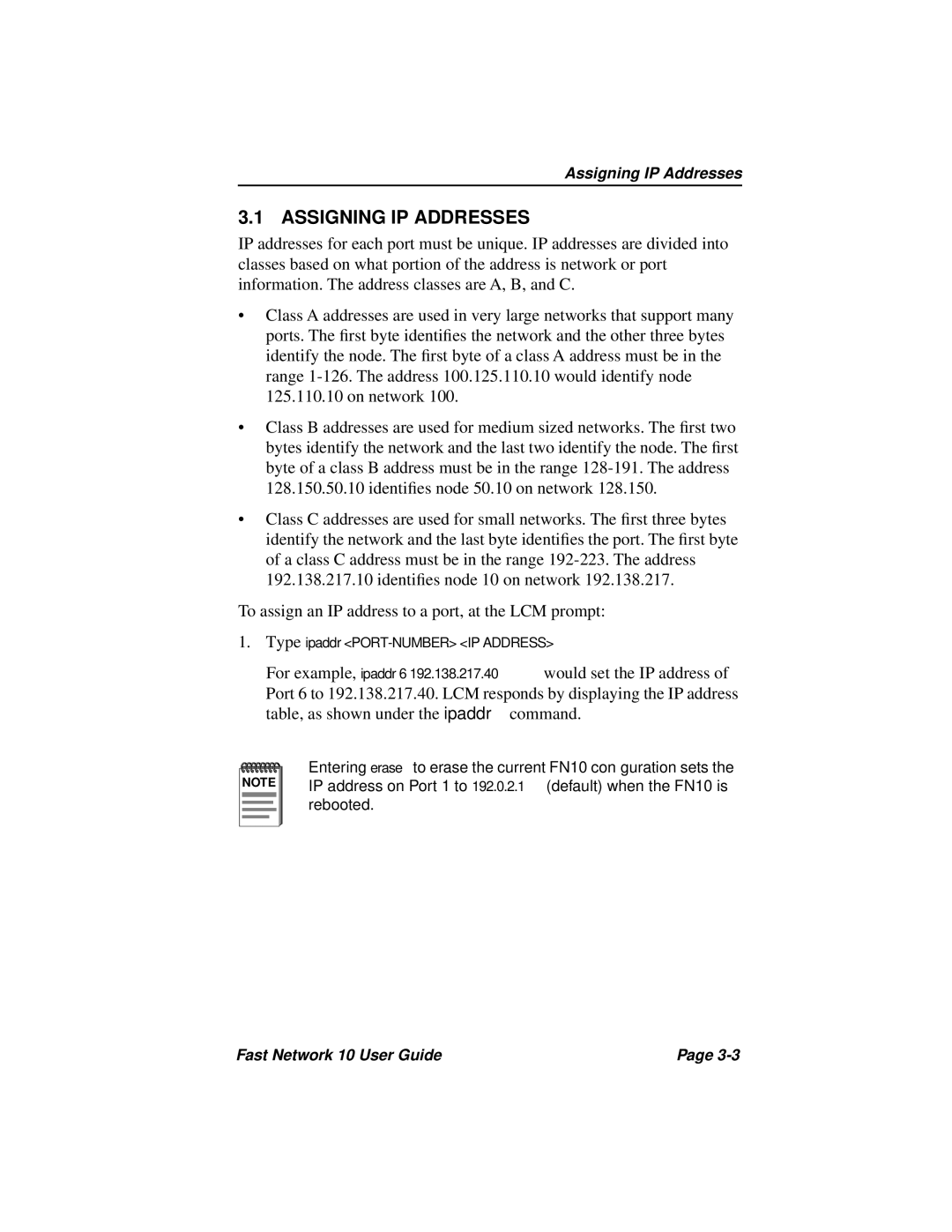
Assigning IP Addresses
3.1 ASSIGNING IP ADDRESSES
IP addresses for each port must be unique. IP addresses are divided into classes based on what portion of the address is network or port information. The address classes are A, B, and C.
•Class A addresses are used in very large networks that support many ports. The first byte identifies the network and the other three bytes identify the node. The first byte of a class A address must be in the range
•Class B addresses are used for medium sized networks. The first two bytes identify the network and the last two identify the node. The first byte of a class B address must be in the range
•Class C addresses are used for small networks. The first three bytes identify the network and the last byte identifies the port. The first byte of a class C address must be in the range
To assign an IP address to a port, at the LCM prompt:
1.Type ipaddr
For example, ipaddr 6 192.138.217.40 would set the IP address of Port 6 to 192.138.217.40. LCM responds by displaying the IP address table, as shown under the ipaddr command.
NOTE |
Entering erase to erase the current FN10 configuration sets the IP address on Port 1 to 192.0.2.1 (default) when the FN10 is rebooted.
Fast Network 10 User Guide | Page |
